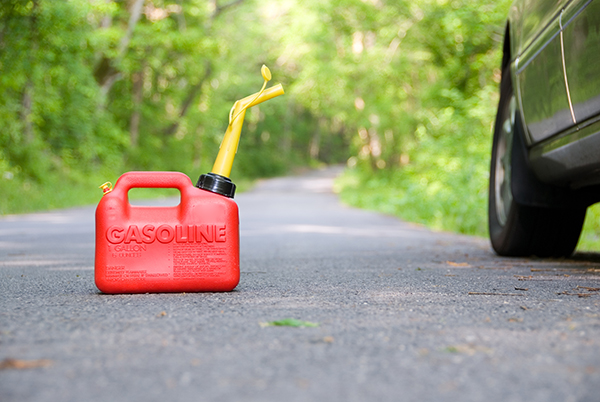Survival essentials: 9 Types of fuel you may need in your stockpile when SHTF
09/29/2022 / By Zoey Sky

You will probably need different tools and devices that require fuel to function after disaster strikes. Your bug-out car will also require fuel, so stock up on it now before SHTF. (h/t to ModernSurvivalOnline.com)
Since you’ll be stocking up on fuel, you need to learn how to properly store and rotate your fuel supply. While stocking up on only one kind of fuel seems like the most efficient and easiest way to keep track of your supply, you may need two or more kinds of fuel if you’re using multiple cars or tools that require different types of fuel.
Diversification can also help prevent loss of capability, which is crucial when SHTF. Different liquid fuels have different characteristics, advantages and disadvantages.
Generally, there is no such thing as the best kind of fuel. Even the most advantageous fuel comes with trade-offs, which you need to consider when choosing a fuel-powered tool for your homestead.
When choosing a fuel, you need to consider if you want something that is widely available, inexpensive, has a short shelf life due to volatility or something that is more expensive with a long shelf life. If you’re not sure what to get, compare different kinds of fuel to find one that meets your needs.
Detailed below are nine of the most common and important fuels that you may need in your stockpile.
Biodiesel
Biodiesel offers many interesting advantages for preppers.
Biodiesel is a form of diesel engine fuel that is created from plant and animal matter. This kind of fuel is produced through a chemical reaction of lipids, like animal fat or plant oil, interacting with a type of alcohol.
The process results in an ester, either methyl ethyl or propyl. Soybean oil, vegetable oil and animal tallow are some of the most common components used for the creation of biodiesel.
Note that only specialty engines can run on pure biodiesel. You can make a usable biodiesel fuel mixture by combining a large quantity of biodiesel with a smaller quantity of standard diesel fuel.
While efficient, biodiesel has one major shortcoming compared to standard types of diesel.
The organic compounds in biodiesel are vulnerable to degradation by different forms of microscopic life that will consume it. This means that without specialty storage procedures and additives, biodiesel won’t last as long as standard diesel fuels.
Diesel
Modern diesel fuel isn’t a specific formulation of petroleum fuel, but it classifies any liquid fuel specifically for use in a diesel or compression ignition engine.
Unlike gasoline, diesel fuel is not as energetic. Commercial diesel fuel is significantly more stable over time, but it does struggle in certain conditions, such as very cold weather.
Like gasoline, modern diesel fuels come with more additives that have slightly reduced their previously long shelf life.
Despite these disadvantages, diesel is a great option for long-term storage compared to gasoline.
When storing diesel fuel, be very cautious of low temperatures which can lead to jelling of the fuel. This can make diesel unusable until temperatures have raised enough to return the fuel to its liquid state.
Gasoline
Gasoline is the most common petroleum-derived liquid fuel that powers internal combustion engines. Gasoline is abundant, comparatively affordable and provides plenty of power for almost any application requiring an engine. However, its volatility as a liquid and vapor requires safe storage practices.
Gasoline also has issues when it comes to long-term storage. The fuel isn’t pure in its commercial form but a combination of multiple hydrocarbons.
Stored correctly in the right container, ethanol-free gasoline will last at least six months to one year before its component compounds separate enough to render the gasoline useless. Note that it’s best to store gasoline in an approved fuel can or tank.
Fire codes typically restrict gas storage to no more than 25 gallons, so keep gas in containers of at least five gallons or less. Leave some room to allow for expansion and close all gasoline containers tightly.
Straight gasoline that has no ethanol can last between one year to one and a half years with a stabilizer additive.
Do not attempt to run an engine with gasoline that has gone bad because it can cause significant malfunctions or destroy the engine.
If you are using a car or tool that runs on gasoline, rotate the fuel in your stockpile regularly. You can also recondition old gas on your own if you don’t want your supply to go bad. (Related: Prepping before SHTF: How to store fuel properly.)
Kerosene
Kerosene is another petroleum-derived hydrocarbon-based fuel often used for household and outdoor purposes, like lamp or stove fuel. Kerosene is highly flammable.
But kerosene operating at high efficiency in a lamp will produce a considerably clear, bright light. Additionally, portable heaters fueled by kerosene can easily heat and dry space, making it a good choice for preppers.
Although kerosene is more expensive, it’s easy to store and has a long shelf life. When stored in a container that minimizes airspace and prevents the formation of condensation, kerosene can last between two to five years.
Paper/cardboard
Paper and cardboard are some of the most common kinds of packaging. Since both are paper products derived from wood, they can be burned in the same way that wood is.
Compared to wood fuel, paper and cardboard products will burn quickly and brightly so regular refueling is required to keep a fire going.
Propane
Propane is often used as fuel for backyard grills, but when SHTF it is a good option for your stockpile.
Liquid propane is the third most commonly used fuel for vehicles worldwide and it comes in right behind gasoline and diesel. Propane can be used to power buses, full-sized cars, power tools and personal heaters.
This versatile fuel is easy to transport, safe when kept in an appropriate and inspected pressure vessel and easy to use. Propane is also relatively affordable, costing about $2.50 per gallon at retail and $2.00 per gallon on average for home delivery.
Unlike other liquid fuels, propane comes with unique hazards.
Propane is a liquid when under considerable pressure, but its low boiling point means it will turn into a gas immediately upon release into the atmosphere. However, propane is heavier than air and the explosive vapor will sink down close to the ground or floor, where it poses an asphyxiation hazard.
Propane can also explode when a leaking propane cylinder is kept near a pilot light or other source of flame or spark.
When stored in the right container and inspected regularly, propane will last for at least 30 years even with no additives.
Sterno tabs/Gel
Sterno is a brand of jellied or solidified alcohol-based fuels. You might see them in tiny tins used to heat food on a buffet table.
Sterno fuel burns extremely hot and cleanly, with some varieties producing intense heat with no visible flame and hardly any smoke. Sterno is a great option if you’re looking for fuel that is readily available, stable, easy to use and suitable for indoor applications. Sterno is reasonably affordable and perfect for camping or hiking.
Note that typical Sterno cans are not insulated and the steel cans themselves will become extremely hot in use. The cans may be a secondary fire hazard if not set on a flat surface or if the ground is not cleared of debris.
Let the can cool down completely before putting it away.
White gas
White gas or “camp gas,” is a naphtha-based petroleum fuel composed of light hydrotreated distillates. This type of fuel is often used to power portable lanterns and camping stoves.
White gas is readily available, affordable, efficient and a popular choice for lanterns and camping stoves. But unlike other fuels, white gas is very limited in its usefulness.
White gas has similar flammability to gasoline, but the former has a very long shelf life. When stored unopened, white gas can last as long as five to seven years and up to two years when stored after being opened.
Note that white gas can rust metal containers, even the metal containers it is sold in. When stockpiling white gas, regularly inspect containers for any signs of rusting and either dispose of it or use it quickly.
Wood
Wood is one of the most basic and fundamental solid fuels. Unlike the other fuels in this list, wood is unique because it requires the least amount of processing, special skills or industry to produce.
Wood that is stockpiled for firewood should be processed into appropriate lengths and split into smaller pieces to maximize efficiency and for rapid drying. Drying or seasoning most hardwoods is a process that takes several months and this should be accounted for if you’re stocking up for oncoming cold weather.
Wood and seasoned firewood are vulnerable to elemental threats like wood-eating parasites and a variety of fungi or molds that will rapidly decay wood. Make the necessary preparations to protect your wood stockpile from these threats.
Before SHTF, stock up on the necessary fuels for your tools and vehicles and plan for long-term storage accordingly to extend their shelf life.
Watch the video below to learn how to use wood to fuel a generator.
This video is from the Red Pill channel on Brighteon.com.
More related stories:
Emergency preparedness: 10 Ways to heat your home after SHTF.
Prepping for SHTF: Top gear you need.
Prepping inventory: Which items are the right ones to overstock?
Sources include:
Submit a correction >>
Tagged Under:
bug in, Collapse, emergencies, energy supply, fuel, fuel supply, fuels storage, Gear, homesteading, how-to, off grid, power, preparedness, prepper, prepping, self sufficiency, self-reliance, SHTF, survival, survival gear, survivalist
This article may contain statements that reflect the opinion of the author
RECENT NEWS & ARTICLES
COPYRIGHT © 2017 GEAR.NEWS
All content posted on this site is protected under Free Speech. Gear.news is not responsible for content written by contributing authors. The information on this site is provided for educational and entertainment purposes only. It is not intended as a substitute for professional advice of any kind. Gear.news assumes no responsibility for the use or misuse of this material. All trademarks, registered trademarks and service marks mentioned on this site are the property of their respective owners.




















